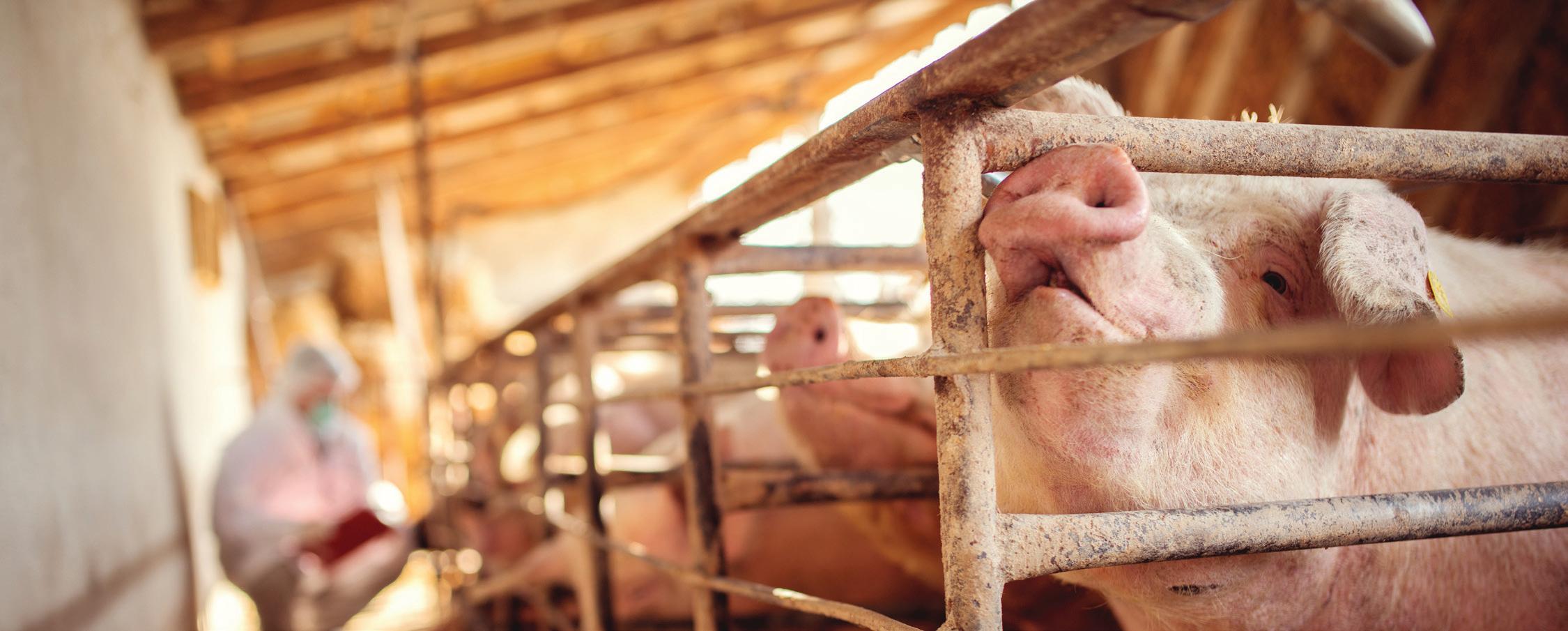Farm Bureau Press



Farm Bureau leaders across the state will gather in Jonesboro July 25-27 for the 76th annual Officers & Leaders Conference and the Women’s Leadership Conference . Both events will take place at the Red Wolf Convention Center.
Officers & Leaders kicks off at noon on Thursday, July 25 with a luncheon, followed by a general session where the Young Farmer & Rancher Excellence in Agriculture and Achievement Awards will be announced as ArFB President Dan Wright addresses the leaders.
Breakout sessions Thursday afternoon will feature a panel on state legislative issues, the new veterinary medicine program at ASU, rural health, voluntary smoke management, H-2A worker programs and commodity division meetings. Thursday night will host an AgPAC reception and ArFB Foundation dinner.
Friday will include another round of commodity division meetings, plus breakout sessions on the state water plan, a review of ArFB scholarship programs, grain marketing and the farm bill.
A general session closing out the Officers and Leaders Conference and kicking off the Women’s Leadership Conference will begin at 10:30 a.m., featuring Dr. Cliff Jones, deputy director of the ASU Delta Center for Economic Development.
The WLC conference will begin at 8 a.m., Friday, July 26, with a Come & Go Networking Session featuring Ag in the Classroom (AITC) hands-on activities.
Friday afternoon attendees are welcome to take an ag industry tour, including opportunities to tour Delta Peanut, the ASU Meats Lab and the Northeast Arkansas Food Bank. More information and registration for the tours will be coming soon.
Saturday’s WLC agenda includes two sessions of workshops and the conference will wrap-up with a general session featuring keynote “The B Word: Unmasking the Illusion and Redefining Success” from Katelyn Duban, a first-generation farmer, storyteller, community builder and host of The Rural Woman Podcast. Registration for O&L can be found here. Registration for WLC can be found here.

ArFB Convention Farmers Market & Ag Mechanic Show, Page 2 ArFB Ag Youth Leadership Summit Photo Recap, Page 3 Scan the QR code to access direct links referenced in each article.
THE LINKS

Washington Co. Retirement | Washington Co. Insurance
Agent Calvin Tackett retired on June 1 after 42 years of service to his customers. (Above) Stacy Cheevers, Washington Co. Farm Bureau president, presents Calvin with a plaque for his service. (Below) Washington Co. Farm Bureau office employees (from left) Curtis Moore, agent; Rhonda Paschal, MSR; Calvin Tackett, retiring agent; Pam Traw, MSR; and David Gove, agent, celebrate with Tackett.


Woodruff Co. Retirement | Woodruff Co. Farm Bureau recently hosted a retirement party for Agency Manager Bobby Bowen. Jeremy Bullington (center), Woodruff Co. Farm Bureau board president, recognized Bowen (right), who will retire after 37 years with Farm Bureau, and Wes Fairchild (left) who will become the agency manger, July 1.
The Arkansas Farm Bureau State Convention trade show will once again feature a farmer’s market sponsored by Arkansas Grown and Arkansas Made. Limited booth space is free to Arkansas vendors thanks to the Arkansas Department of Agriculture’s 2024 sponsorship.
Those interested can learn more and register here. The application window will close Aug. 1 with awardees announced Sept. 1.
The Arkansas Farm Bureau Ag Mechanics show will also return this year, where ArFB will host a statewide youth contest. Students will have the opportunity to showcase their projects,
After decades of substantial U.S. agricultural trade surpluses, the U.S. is forecast to experience a record trade deficit for the second year in a row. American Farm Bureau Federation (AFBF) economists analyzed the factors contributing to the deficit in their latest Market Intel report.
According to the analysis, the forecast $32 billion deficit is caused by a multitude of factors, one of which is rising imports of fresh fruits and vegetables. American produce farmers face significant challenges in competing with less expensive foreigngrown produce, most notably a lack of affordable and available farm labor.
“Production of many fresh fruits and vegetables is extremely labor intensive,” AFBF economist Betty Resnick writes in the Market Intel. “For U.S. agricultural production broadly, labor accounts for about 10% of expenses. For fruit and vegetable production – labor costs account for 38.5% and 28.8% of input costs, respectively.”
Factors contributing to decreased agricultural export values include falling commodity prices for American crops and a strong U.S. dollar.
“The strong U.S. dollar is making U.S. products less competitive on currency exchange alone,” Resnick explains. “For instance, Japan is consistently a top-five market for U.S. agricultural

ranging from picnic tables to livestock trailers, all designed and manufactured by the students. All youth are invited to take part in this competition.
To apply for the youth contest or for more details, please contact Matt Jackson at matt.jackson@arfb.com or call 501-228-1237.
In addition to the farmer’s market and the Ag Mechanics Show, the trade show will include a lineup of stage presentations including, but not limited to, applicants for the Arkansas Farm Bureau Ag Innovation Challenge, the Young Farmers & Ranchers discussion meet, the Arkansas AgCast and more.
Look for more information on the 2024 State Convention in the following months.
products. The Japanese yen is the lowest it has been against the U.S. dollar since 1990 and half of its value from only 12 years ago, in 2012. While this exchange rate is great for U.S. tourists visiting Japan, it is very difficult for Japanese consumers seeking to purchase quality U.S. products.”
Further complicating matters, the U.S. has not entered into trade agreements with new countries since 2012 while other countries have signed agreements of their own.
“This is a difficult time to be a farmer, and looking ahead at another year with a record ag trade deficit proves that,” said AFBF President Zippy Duvall. “Our farmers are facing high labor costs — if they can hire help at all, competition from growers in other countries and stagnant, outdated trade agreements. I hope Congress and the administration see this historic deficit as a wake-up call and work to implement policy changes to address these challenges.”
This is the fourth time in six years the U.S. has faced an agricultural trade deficit. Prior to fiscal year 2019, the U.S. had not experienced an agricultural trade deficit since at least 1967, and possibly not in its entire history.



Benton Co. Donations | Benton County Farm Bureau board members, agents, YF&R and Women’s Committee members spent a day cooking lunch for families in Decatur that were recently hit by tornadoes.

Read the full Market Intel here. To hear the local perspective, check out the latest episode of the Arkansas AgCast.
2024 AYLS | Arkansas Farm Bureau’s Ag Youth Leadership Summit was held June 2-5. The summit is an immersive leadership camp for juniors and seniors in high school and was hosted at Southern Arkansas University in Magnolia. Students learned leadership skills commonly utilized in careers across industry sectors. Students also participated in a servicelearning project and explored agricultural careers. The summit wrapped up with a mini-Olympics, where students competed in pool, table tennis, boat making, and a lip-sync battle. Click here to see event photos.
as of June 26, 2024
Contact Brandy Carroll brandy.carroll@arfb.com
Tyler Oxner tyler.oxner@arfb.com
Rice futures are trading in a mostly sideways pattern for the time being. September charted a bearish reversal off a new high last week, signaling a major high had been put in. However, follow-through selling has been somewhat limited. Resistance at that high of $15.83 could prove tough to break, but the market is building support at $15.40. Additional support can be found at $15.30 and $15.20. The prospect for strong exports, due in part to production issues in South America, is supporting the market despite the relatively good condition and large size of the domestic crop. Currently, 83% of the crop is in good to excellent condition, compared to 70% at this time last year. 13% of the crop is headed, mostly in Texas and Louisiana.
December corn prices continue to decline as the forecast for the U.S. Midwest appears less threatening. The December corn contract reached its lowest level since Sept. 21. Bullish news has been scarce, pushing the market towards oversold conditions, although being in this area has not significantly impacted the downward trend so far. U.S. crop ratings dropped by 3% to 69% good/ excellent, but the overall ratings are still the highest since 2020. An active trading day is expected on June 26, with the release of two major USDA reports. The trade anticipates the NASS quarterly Grain Stocks report to show about 770 million bushels
more than last year. Additionally, the new crop acreage report is expected to indicate 89 to 91.2 million acres of corn planted this spring.
November soybeans hit 2.5-year lows late last week but have since slightly rebounded due to flooding concerns in southeast South Dakota, southern Minnesota, and northwest Iowa, where 4-8 inches of rain fell i72 hours. The current contract low serves as support, with the 100-day moving average. Soybean ratings also dropped by 3% to 67% good/ excellent, aligning with expectations. Arkansas’ soybean ratings remain unchanged at 71% good/excellent. The USDA’s Grain Stocks report, expected on Friday, is anticipated to show 962 million bushels of soybeans as of June 1. Other reports are expected to show soybean acreage at 86.9 million acres, consistent with the March report.
Cotton futures set new 20-month lows last week. Old crop July is trading mostly sideways, unable to build any momentum on a bounce. New-crop December, however, is building on support at 70 cents and climbing higher. Strong weekly export sales of 189,000 bales for old crop and 111,800 bales for new crop is providing support. Outside markets are mixed, as a firmer dollar is negative for prices but is being offset by higher crude oil prices, which can support cotton futures. 56% of the crop is in good to excellent condition, but dryness is becoming a concern in parts of the south.
Bearish trends continue for wheat, with most recent trading sessions closing lower. Technical indicators suggest extreme oversold conditions, but recent fundamental news remains bearish. Winter wheat
harvest is progressing rapidly, about 7 to 10 days ahead of normal, with few obstacles for combines. U.S. harvest progress has reached 40% completion, aligning with expectations and significantly above the 21% from last year and the 5-year average. Arkansas reports that 83% of the crop has been harvested, compared to 77% at this time last year. The July Chicago wheat contract appears to be holding above its March low of $5.37, which serves as support.
After a period of consolidation, cattle futures have broken out of previous resistance around $185. The market now looks poised to challenge previous resistance above $187. Previous challenges of that resistance, however, have resulted in bearish key reversals. The monthly Cattle on Feed report was overall a bit bearish, but futures are trading at a discount to cash prices, so the impact on the market has been minimal. May placements were 104.3% of a year earlier and above the top end of pre-report trade estimates. The June 1 inventory was 99.9% of a year earlier, also above the average trade guess. May marketings were 100.2% of last year, slightly below expectations.
After a brief respite, hog futures have continued their downward movement. October is trying to confirm a bottom and has charted a bullish reversal after moving to a new low of $73.17. Pork production is expected to be up 4-5% for the remainder of the year, and that will limit the upside potential of the market. However, further sow liquidation is also expected.